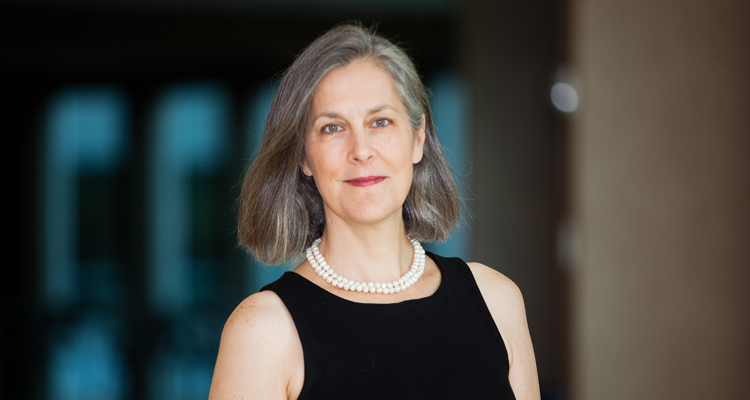I can’t say exactly why, but the variety in our world – political, cultural and economic – has always intrigued me. It may have something to do with reading National Geographic magazines as a kid and the lack of variety I saw around me in the Minnesota suburb where I grew up.
Wanting to experience and better understand variety led me to two degrees in international politics (Carleton College and Columbia University), a two-year fellowship (Japan), lots traveling and studying abroad (over 30 countries), working for a global company (including a foreign assignment in Hong Kong), a Ph.D. in international management (University of MN), and then teaching and researching here at St. Thomas.
Variety is intriguing but also challenging. In my research I try to learn how people can more effectively collaborate across boundaries like time zones, language, culture and business functions. Working in a global organization, I experienced firsthand the benefits of working across boundaries and the difficulties they present.
The focus of most of my research is work teams, because they are a very common mechanism organizations use to collaborate across boundaries and get work done. In each project, I investigate aspects of teamwork and team outcomes that are affected by variety on one or several dimensions, like nationality, gender or language.
Most research uses objective measures of diversity, but my co-authors and I have found that understanding perceptions of difference and similarity provides additional insight. For example, we found that on some dimensions perceptions of similarity shift and change as team members interact.
So, if you are a U.S. male you might start out thinking you are pretty similar to a U.S. male teammate, but find out the hard way that he procrastinates and you do not. Similarly, you might start out thinking you are quite different from your Chinese female teammate, but realize she likes to get things done ahead of time, just like you do. These findings might help us develop interventions to improve the effectiveness of diverse teams, e.g., early attention to communication about approaches to work.
In other research, I’ve investigated the role of a cross-border team experience on a person’s social network after the team has disbanded. It’s a good thing for organizations to have their members connected across geographic and functional boundaries – it helps facilitate the transfer of knowledge and best practices, and reduces redundancy. But, lots of research has found that it’s hard to connect people across boundaries because we tend to connect to people who are like us: “Birds of a feather flock together” (in social psychology we call it “homophily”). In our research we have found that a shared team experience can help people reach beyond their “flock” (or, across boundaries). We looked at advice-seeking patterns among a group of people.
As homophily predicts, in general, people sought advice from similar others. But, if people had a prior shared team experience months earlier, they were just as likely to seek advice from a team member from a different country as a team member from the same country.
These results mean that people managing global organizations might want to think about how they can strategically use teams, not only to get current tasks completed, but also to help build connections across boundaries that will benefit their organization on future tasks.
Doing research helps me cross boundaries as well – stepping outside the classroom and into organizations, talking to people and understanding issues. It also allows me to be part of a community of scholars outside St. Thomas.
Right now I have co-authors in Singapore and Germany, so we ourselves are the kind of team we are studying – those that cross time zones and have members with different native languages! The process of presenting and publishing research helps scholars from different parts of the world collaborate and build on each other’s work. For example, at a conference my co-author and I met a scholar from Germany who had read our published work and then published his own research challenging some of our assumptions. Now he is a co-author with us on two studies where together we are pushing those ideas even further.
The St. Thomas community is important, but I think it’s good for me and for my students that I’m also connected outside – to colleagues who challenge my work and teach me new perspectives.
As I’ve described in this essay, my research focuses on discovering how people can more effectively collaborate across boundaries, ultimately helping organizations succeed in achieving their goals. My teaching and service at St. Thomas has a similar focus. I teach and advise in the area of international business and I’ve served on several St. Thomas committees working on globalizing education and studying abroad.
I’m currently promoting an idea I’m calling “biculturals in our backyard” where we facilitate intercultural learning by developing deeper connections with our own urban community.
I think experiencing the wider world helps us appreciate variety and differences and at the same time discover our common humanity. In a broad sense, I want to help students learn about the world’s variety and how exciting, interesting and necessary it is to reach beyond our similar and comfortable “flock.”
Associate professor Mary Maloney teaches in the Opus College of Business.
From Exemplars, a publication of the Grants and Research Office.







